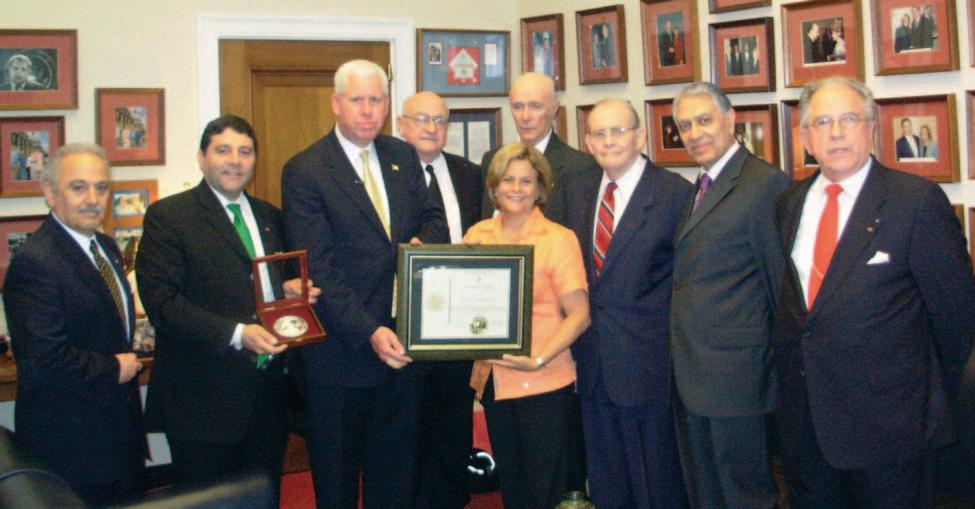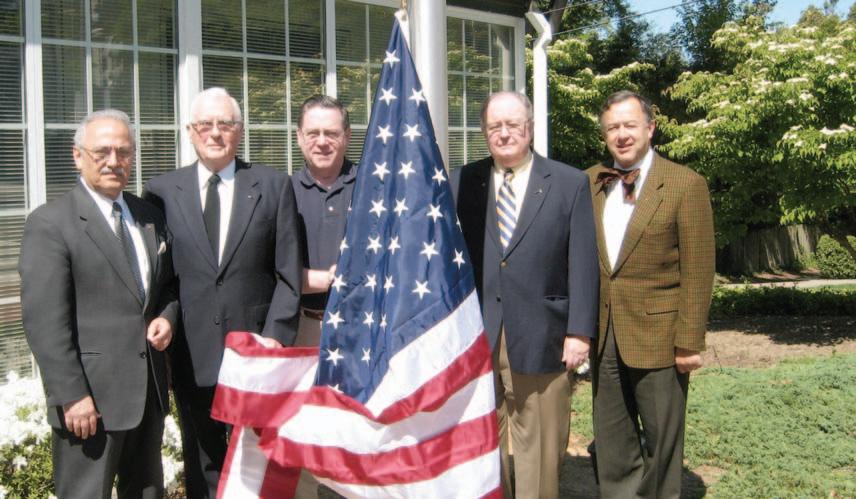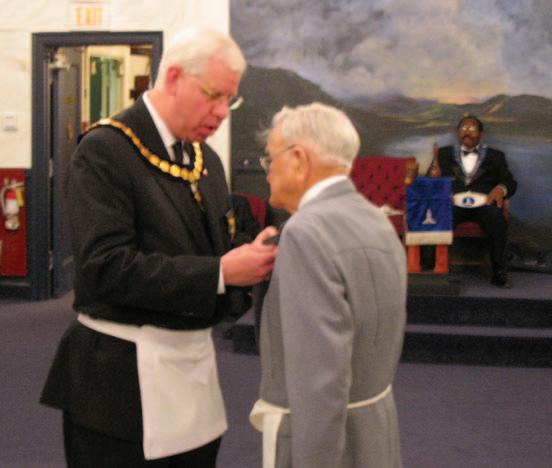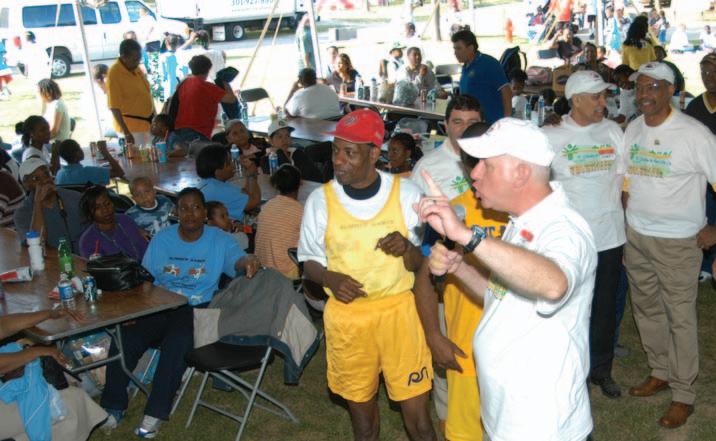
6 minute read
The Nature of Masonry
What is Masonry, really? Is it simply a men’s eating and drinking club? Or is it something more significant? How could 18th century Masonry be understood by Masons, then or now, as not much more than an innocuous men’s club? This perspective is the source of a nagging question for some contemporary Masons. Can it really be taken seriously?
It seems inconceivable that Masons could step back from a past of high standards, divine inspiration and intellectual pre-eminence to become an inconsequential and self-serving social organization. Masonry, without doubt, was once the most productive and formative human force in the destiny of mankind.
When the Rev. Dr. James Anderson published “The Constitutions of the Free-Masons” in 1723, the idea began to emerge that Masonic bodies were only “men’s eating and drinking clubs.” Rather than accept that as fact, we might wonder whether it was not an exaggerated criticism intended to hide the serious work of Masonry. Whether it was a criticism or not, that appears to apply to present day Masonry. How often have we heard great food trumpeted as the only description of a missed lodge meeting?
There appears, indeed, to be a glaring incongruity between Masonry of the past and what Masonry is today. It appears to some to be little more than a social club for men where easy charity is exercised, investment into the future of humanity is limited, and urgent matters of national and world health are either not discussed or glibly brushed over. Current practices, in most cases do stand at odds with the spiritual values, mind set, designs, and actions of the past.
Standing in stark contrast to the concept of a men’s social club, Anderson’s “Constitutions” was the most important statement Masonry had made about itself up to that time. Years of collection and analysis of ancient secret Masonic documents were synthesized into one volume. The Constitutions was a guide to Masonic wisdom and history, a consolidation of the wisdom of eminent scientists, scholars and theologians. Jerry W. Carter, III
Considering the quality and the source of the information contained in The Constitutions, it is indeed curious that such a bland, men’s club picture remains for many the image of Masonry. It is also curious that Anderson’s “Constitutions” is still unknown to most long-time Masons; and for those who have heard about it, at least in the Americas and Europe, it is regarded merely as a historic curiosity, which few have read or understand.
Now, about three centuries after the publication and distribution of Anderson’s “Constitutions,” the main concern of contemporary Masonry is focused on the sharp decline of membership and lodge closings. It is mystifying and alarming to many Masons that only a few men enter Masonry, and of those who do, still fewer remain to fill an ever-declining number of lodges.
The fact is there are a growing number of men in our society who are obviously unsatisfied seekers. With their interest piqued by recent scholarly and theatrical presentations about Masonry, they enter into our lodges with high expectations as they work to reach their objective to become a part of a Masonry that is rich with meaning and significance. These new members, however, soon learn that Masonry has become more and more bland, and less relevant in increasingly stressful contemporary conditions.
Moreover, contemporary Masons are encouraged not to compare the Masonry of history with Masonry now. Some apparently fear that in this comparison we would suffer greatly, for the Masonry of late has not been able to attract or support the modern equivalents of Desaguliers, Da Vinci, Newton or Mozart. Instead of embracing our past, we turn away from our greatest asset and in the process discourage the very unusual minds that could tremendously benefit both our society and Masonry.
Time rushes by. Now is the moment for American Masonry to look more closely at the totality of Masonry’s achievements, and then to honestly evaluate our relevance today. We should look at ourselves and Masonry,
not in terms of just our current state, but also in light of the foundation our predecessors laid out for us, half shrouded in secrets and code for us to discover again so we may rebuild the Temple.
To assess of our own relevance, we must first realize that our spectacular present -day technological and materialistic progress has mesmerized us and has obscured the glorious and profound achievements of Man’s Mind over past millennia. Our “now” which consumes our attention, is actually but a small segment of a time continuum comparable to the fulcrum of a limitless time line balanced upon the apex of a pyramid.
In this continuum, are past Masonic accomplishments of the mind, which were translated into a concrete reality that has indelibly shaped the world in which we exist today. Consider, for instance, the important constructions of Masons in the centuries past, such as the perfectly aligned and symmetrical pyramids, the magnificent cathedrals soaring to heaven with stone spires, the numerous and widespread magnificent castles, and great mansions. Consider the system of constitutional democracy, which Masons had such a strong hand in creating and maintaining.
Within the ageless Masonic presence, there exists the supreme commitment for genius to convey a divine expansion of consciousness to mankind. The “light” referred to in Masonry is the inexplicable inspiration and transmission of the Divine into artists who received the “light” and translated it into concrete experiences, which could be shared of with attuned audiences in the conventional world.
This perception, that there is a divine force acting in all of us, though more strongly in some, is unbelievable to many. However, there is historical testimony to divine inspiration in the Renaissance and several hundred years that followed it. During that period, science, art, and the divine were not distinguishable as separate entities as they are today. They existed in the Renaissance Mind as one and inseparable.
It is important for Masons today to recognize the significance of both Masonry and our Brethren in the quantum jumps that were made in the past. It was the unique and imaginative minds of Masons, who were allowed to nurture and practice their special craft, who lead civilization forward in great leaps and bounds. It was Masonry that provided the opportunity for the blossoming of this tremendous potential. It is easy to forget the Masons of bygone time who invented the foundational information, vision and tools required for the development of the modern society that we enjoy. Without the contributions of Masons of the past, many of the conveniences of modern life would not be available. Without the work of Masons in the past, we might not have the educational system we have benefitted from, feudal states might still battle one another, and democracy might only be a footnote in history.
The success of Masonry and its contributions to humanity are so great that it is nearly impossible for the human mind to step back far enough to see the entirety of its significance. Masonry has had long periods when significant material wealth fed the greatest intellectual and esthetic achievements.
With the backing and partnering of Masonry, small groups of individual Brothers working in obscure areas of research, created unimaginably successful physical manifestations of Masonic presence and provided the basis of much that we know and rely on in our modern lives.
Now is the right time to reestablish Masonic relevance. It is time to open up those books, discussions, and ideas that so much concerned our Masonic predecessors. Today Masonry can move from easy charity to the more meaningful concept of investing in the most valuable resource humanity has ever had, the genius of the human mind. The choice is ours. We can make Masonry relevant if we are determined to five priority to the intellectual and spiritual resources of our best minds and will share that which we will surely find.







